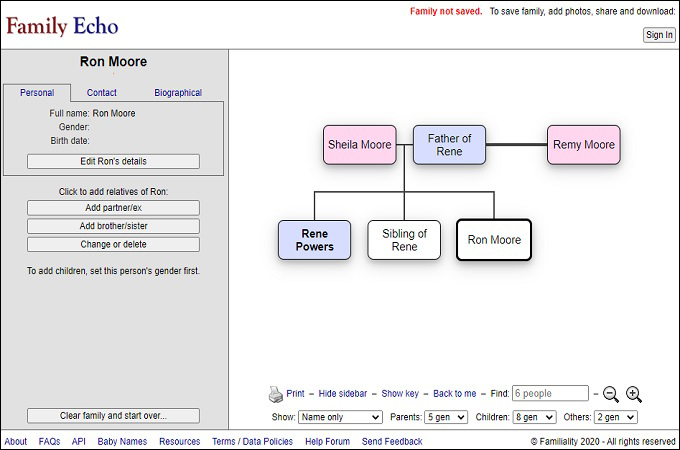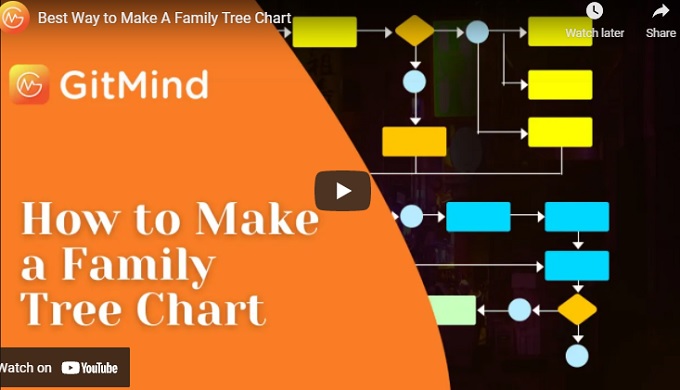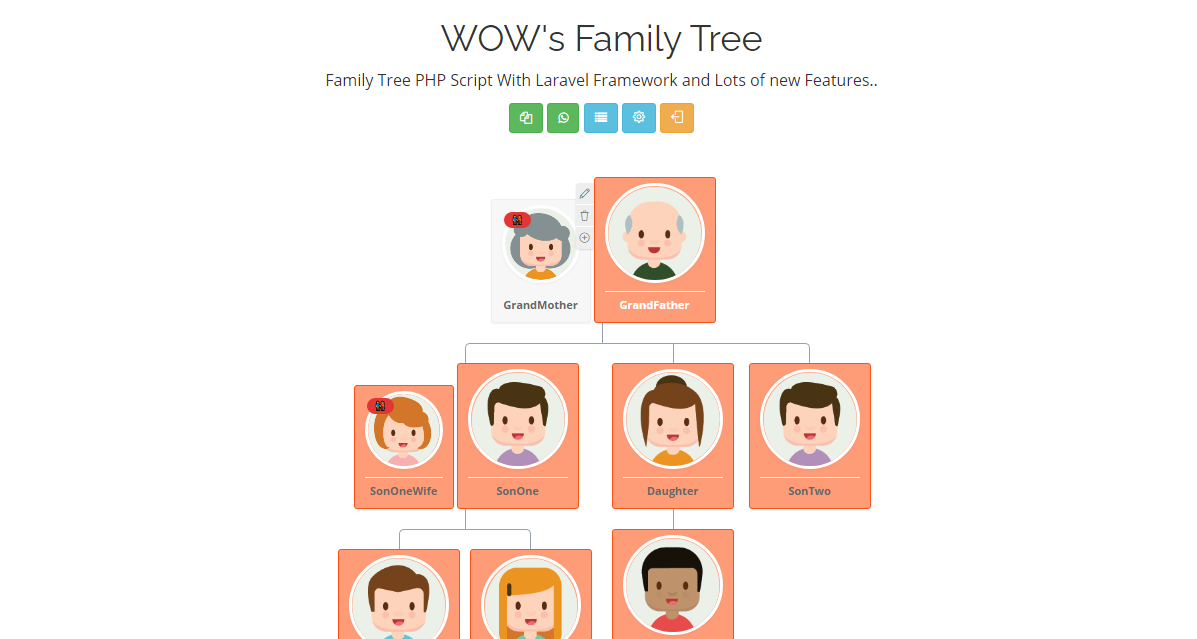

And Ubuntu started (or advanced) a major trend in that direction.

Most users are not “ideological” about their computers, they just want them to work. Ubuntu really changed that! I don’t know that they were the first, but early on the Ubuntu distributions included proprietary drivers, so many user’s hardware (sound, graphics, wireless) all worked out of the box. Yet, they do still make binary blobs and other nonfree software available.
Free family tree software for linux free#
So, why branch the Debian tree out into Ubuntu, and others? The Debian GNU/Linux “ideology” (the Debian Social Contract, etc) has always been quite strict to guide the users to using only Free and Open Source Software (FOSS).

Free family tree software for linux install#
Many users today are even totally oblivious to this, and they rely on the graphical “Software Managers” to install or remove applications. This is for folks who use the terminal more and are more deeply into the workings of their distro. These days it’s more Debian versus Fedora (and their derivatives), but both can run any Desktop Environment (DE), so what else is there? I think it is the package management that distinguishes them. I think that when people start getting into Linux, they just tend to favor one over the other, even though both are perfectly capable. The big difference (to me) between Debian and RedHat is their package management, as you have noted. Some folks love it, of course, and there are a good number of derivatives that are also popular, so it still manages to hang on after all this time. That, coupled with Slackware’s extremely slow release cycle, has basically kept Slackware from the same popularity as it’s two main counterparts. They wanted Linux to replace Microsoft Windows. But desktop users have not wanted Linux to replace Unix. Slackware claims to be the most Unix-like of the Linux distros, and this may be true. There were some other early players, but I don’t think that any has surviving lineage today except these big three.

Slackware (1993), Debian (1993) and RedHat (1994) are the great-grandfathers of the surviving Linux world, as the chart linked by shows. I know most (all?) of these use apt/deb as the package manager, but other than that what is the difference? How does Ubunto relate to Debian, Mint, MX, Manjaro, etc. what is the relationship with the Debian side of things? For example Redhat 7.x is on the 3.10 linux kernel. They took out whatever didn't work well, and keep in what was stable. Old versions of Fedora are what we call Redhat today. It is where future versions of redhat get tested by everyday people out in the world. (however security patches tend to be up to date).įinally there is Fedora, this is redhat's hobbyist, version. It tends to run about 3 or 4 months behind redhat as far as new versions, patches and updates go. It doesn't come with some of the proprietary binaries that rehat does, but other than that, it is a clone of Redhat also. Then there is CentOS, is the "free" non-supported version of Redhat. There is also Scientific Linux, like Oracle Linux, it is a clone of Redhat, but supported by a different vendor. Two major differences of the Oracle version are that Oracle 7.x also includes a 4.14.x kernel that you can boot into. Oracle makes something called Oracle Unbreakable Linux. Redhat makes it's money by selling support for linux to companies. It uses something called yum/dnf to manage it's packages which are called RPMs. It takes the generic Linux and modifies it. I am mostly familiar with the redhat side of the family.īut there are other redhat "like" distro's.


 0 kommentar(er)
0 kommentar(er)
